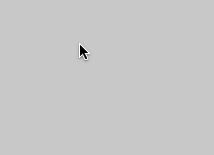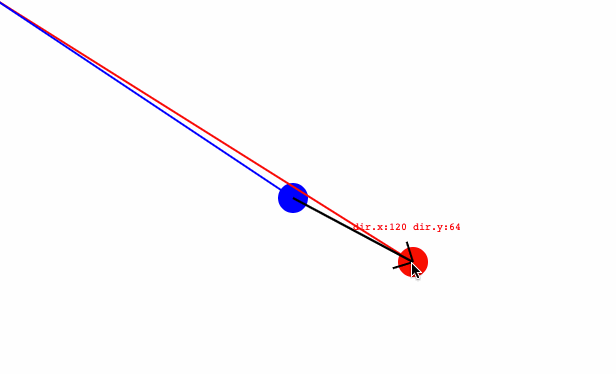I’ve been working on re-writing Daniel Shiffman’s Nature of Code boid/vehicle chapter in OpenFrameworks. It can be seen here on Github. As I say in the README it has been done before but I still want to do it as an exercise for myself, to furthur learn OF and C++, and as I learnt in my previous post I think it is a great learning experience to really pick apart something which you don’t quite understand. Vector mathematics is something I’m still working on and find very ineresting, but converting the more theoretical, pure mathematics into useable code does lead to some head scratching.
Re-writing the code pretty much from the book got me to the point where I could draw a small arrow graphic which would follow and point at the mouse. But I ran in to some difficulty really understanding the maths behind it.

So far the OF re-write (port? do you call it a ‘port’?) has got to the basic movement where the vehicle can ‘seek’ or ‘arrive’ at a target by slowing it’s acceleration when it is within a certain distance. This meant I could set a ‘prey’ vehicle to move randomly from point to point every second, with another ‘predator’ vehicle chasing it at a slower speed.

So to get my head around it, I re-wrote it all again but this time in Javascript. This is partly because to get a quick prototype up and running, particularly if it’s a visual thing, I do find JS to be very useful. It’s really quick and easy to start drawing on the screen, and not having to compile and run everytime is really handy.
I wrote a simple PVector class, as is found in the Processing library (with the help of Khan Academy of course) and was able to get two vectors drawn on screen. The ‘ah ha!’ moment with when I started to think of the ‘point’ vectors as arrows from the origin (0,0) to the given points instead. Obtaining the director vector ‘dir’ I know is achieved by subtracting the target location from the current location, but it was only once I started seeing the vectors graphically did this make sense.
The second ‘ah ha!’ moment with when I realised the screen co-ordinates has the x-axis flipped compared to a standard grid. All the maths I was doing by hand would give me a negative x-value compared to what I was getting on screen.
So I now have the JS and the OF/C++ libraries on the go and I’m sure I’ll develop both as it seems like a complimentary pair: one as a prototyping platform and the other as the more robust software thing with which I hope to create flocking simulations.

Josh